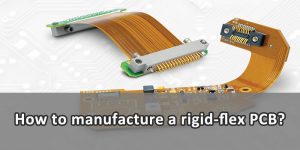Rigid Flex Printed Circuit Board
The best rigid-flex PCBs combine the strength of hardboards with the flexibility of flex circuits to enable product miniaturization and increased functionality. They are used in a wide range of military and aerospace equipment, industrial automation systems, medical devices, and telecommunications products, among many others. Rigid flex circuits allow for easy integration of complex functions into small spaces, and are also ideal for a number of harsh environments.
Creating a rigid-flex circuit requires careful planning and design, which begins with understanding the product’s goals. Working with a rigid flex pcb manufacturer designer can help you design a prototype that will accomplish your goals while ensuring the circuitry meets all required specifications. After you have a design that is ready to go, you’ll need to select the proper materials for your project. This process involves considering the board’s halogen status, thermal, chemical, and mechanical properties.

Once you’ve chosen the best materials for your project, you can begin the production process. Holes are drilled into the flex and rigid sections of the PCB, which are then plated with copper. The conductive layers are then laminated together with a sheet of no-flow prepreg to form a finished rigid-flex circuit. The entire assembly undergoes rigorous testing and inspection to ensure that it meets all required quality standards.
Rigid Flex Printed Circuit Board Manufacturer
While the production process for a rigid-flex circuit is complicated, the results are highly beneficial. Rigid-flex PCBs offer cost savings, increased performance and reliability, faster test times, and reduced rework time. They can also reduce space requirements and weight, while reducing the number of connectors needed. They also offer a greater degree of flexibility and can withstand a larger amount of strain and flexing.
The top and bottom areas of the flex circuits are protected by a coverlay layer, which is usually additional polyimide film with adhesive. However, an adhesiveless process is also available. If there are components mounted on the flex circuits, this coverlay layer is also a solder mask. Typically, this is photoimageable solder mask, which can be screen-printed or etched.
Depending on the application, rigid-flex circuits may need stiffeners in specific locations. These stiffeners can be in the form of a metal core or an epoxy-based material. Stiffeners can help to increase the structural integrity of the flex circuits, and they can also protect against stress on plated through holes.
When looking for a rigid-flex circuit manufacturer, you want to choose a company with extensive experience producing these boards. The fabricator should be qualified to produce high-quality flex circuits, and it should have the ability to handle a large volume of orders. The supplier should also have the necessary tools and machines to handle the production process. It is important to choose a rigid-flex circuit manufacturer that offers competitive pricing and fast turnaround times.
Sierra Circuits is an industry-leading rigid flex manufacturer with a 70,000 square foot state-of-the-art facility, and they offer fast, 24-hour turn-around on all orders. Their team of experts is always available to assist you with your order and can make sure that your circuit board complies with all regulations. In addition, they can produce a prototype in 24 hours and provide technical support around the clock.